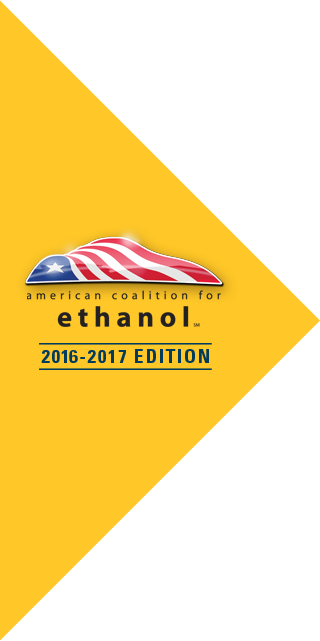
Hawaii
POPULATION (2015): 1,431,603
REGISTERED CARS & LIGHT TRUCKS: 1,347,508
ANNUAL GAS CONSUMPTION (2014): 450 Million GPY
TOTAL RETAIL STATIONS: 283
Fuel specifications
Conventional
9.0 psi RVP gasoline is required at the retail level from June 1-September 15.
Contact information for key state regulatory agencies
Department of Health (Clean Air Division), 808-586-4200
State Laws & Incentives
Alternative Fuel and Advanced Vehicle Acquisition Requirements
State and county agencies must purchase light-duty vehicles that reduce petroleum consumption and meet the needs of the agency. The priority to be used for purchasing such vehicles is as follows:
- Plug-in electric vehicles;
- Hydrogen or fuel cell vehicles;
- Other alternative fuel vehicles;
- Hybrid electric vehicles; and
- Vehicles identified as top performers for fuel economy in the U.S. Environmental Protection Agency's annual "Fuel Economy Leaders" report.
Exemptions may apply. State agencies must purchase alternative fuels and ethanol blended gasoline when available, evaluate a purchase preference for biodiesel blends, and promote the efficient operation of vehicles. For the purpose of this requirement, an alternative fuel is defined as an alcohol fuel, an alcohol fuel blend containing at least 85% alcohol, natural gas, liquefied petroleum gas (propane), hydrogen, biodiesel, a biodiesel blend containing at least 20% biodiesel, a fuel derived from biological materials, or electricity generated from off-board energy sources. For more information, see the Hawaii State Energy Office's Vehicle Purchasing Guidelines website. (Reference Hawaii Revised Statutes 103D-412 and 196-9)
Alternative Fuel Standard Development
The state of Hawaii is responsible for facilitating the development of alternative fuels and supporting the attainment of a statewide alternative fuels standard. According to this standard, alternative fuels will provide 20% of highway fuel demand by 2020 and 30% by 2030. For the purposes of the alternative fuels standard, cellulosic ethanol is equivalent to 2.5 gallons of non-cellulosic ethanol. (Reference Hawaii Revised Statutes 196-42)
Alternative Fuel and Advanced Vehicle Acquisition Requirements
State and county agencies must purchase light-duty vehicles that reduce petroleum consumption and meet the needs of the agency. The priority to be used for purchasing such vehicles is as follows:
- Plug-in electric vehicles;
- Hydrogen or fuel cell vehicles;
- Other alternative fuel vehicles;
- Hybrid electric vehicles; and
- Vehicles identified as top performers for fuel economy in the U.S. Environmental Protection Agency's annual "Fuel Economy Leaders" report.
Exemptions may apply. State agencies must purchase alternative fuels and ethanol blended gasoline when available, evaluate a purchase preference for biodiesel blends, and promote the efficient operation of vehicles. For the purpose of this requirement, an alternative fuel is defined as an alcohol fuel, an alcohol fuel blend containing at least 85% alcohol, natural gas, liquefied petroleum gas (propane), hydrogen, biodiesel, a biodiesel blend containing at least 20% biodiesel, a fuel derived from biological materials, or electricity generated from off-board energy sources. For more information, see the Hawaii State Energy Office's Vehicle Purchasing Guidelines website. (Reference Hawaii Revised Statutes 103D-412 and 196-9)
Alternative Fuel Tax Rate A distributor of any alternative fuel used to operate an internal combustion engine must pay a license tax of $0.0025 for each gallon of alternative fuel the distributor sells or uses. In addition, a distributor must pay a license tax for each gallon of fuel sold or used by the distributor for operating a motor vehicle on state public highways according to the following rates:
|
Fuel Type |
Tax |
|
Ethanol |
0.145 times the rate for diesel |
|
|
|
|
|
|
|
|
|
For other alternative fuels, the rate is based on the energy content of the fuels as compared to diesel fuel, using a lower heating value of 130,000 British thermal units per gallon as a standard for diesel, so that the tax rate, on an energy content basis, is equal to one-quarter the rate for diesel fuel. Counties may impose additional taxes. (Reference Hawaii Revised Statutes 243-4 and 243-5)
Federal Incentives
Ethanol Infrastructure Grants and Loan Guarantees
The Rural Energy for America Program (REAP) provides grants and loan guarantees to rural (population less than 50K) small businesses to purchase renewable energy systems or make energy efficiency improvements. Eligible renewable energy systems include equipment used to distribute flexible fuels. The maximum grant funding is 25% of project costs and the maximum loan guarantee is $25 million. The program is funded through fiscal year 2018 but is subject to congressional appropriations thereafter. For more information, see the REAP website.
Point of Contact
Office of Rural Development, Business and Cooperative Programs
U.S. Department of Agriculture
Phone: (202) 690-4730
http://www.rurdev.usda.gov/
Ethanol plant direct E85/ethanol sales
Click here for a complete list of domestic ethanol producers and sales contacts for E85/direct ethanol sales

AVG STATION (132,000 GPM)





